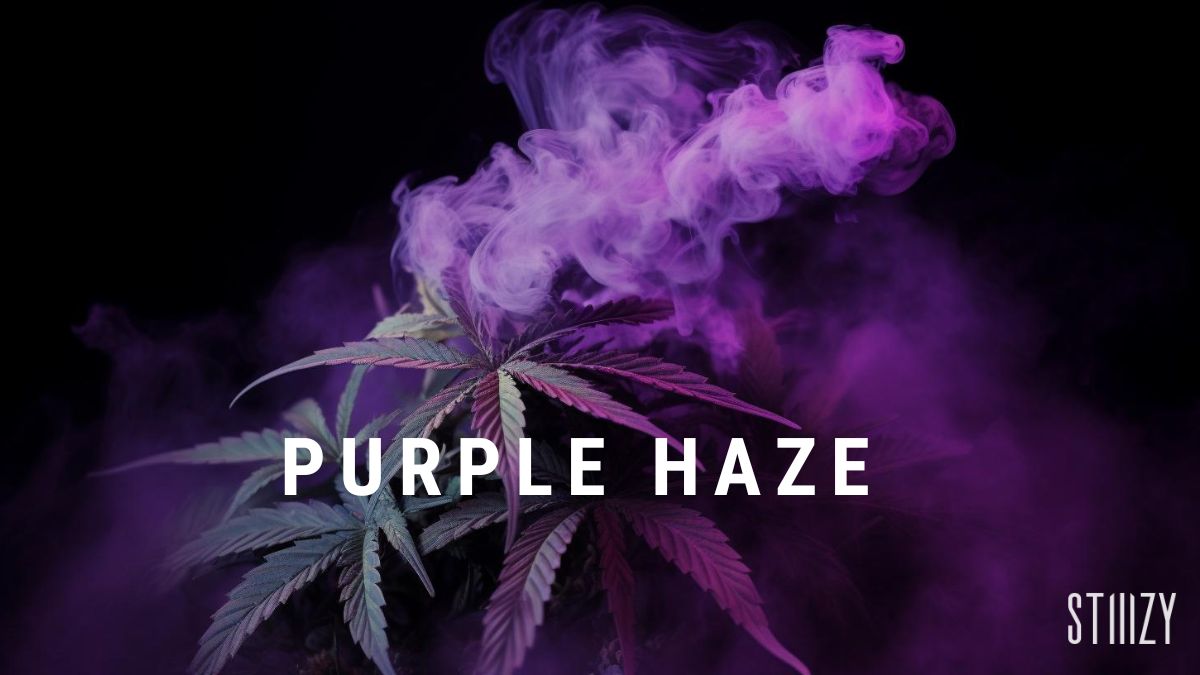Purple Haze Strain Guide

Purple Haze has held a unique place in cannabis history for decades. Recognized for its vibrant purple coloration and storied cultural associations, this sativa-dominant cultivar continues to capture the interest of growers, enthusiasts, and collectors.
Unraveling the History of Purple Haze
Purple Haze emerged during the 1970s, a time when the cannabis scene was evolving rapidly. Breeders known as the Haze Brothers introduced it to the market in Santa Cruz, California. Its rise in recognition paralleled a period when sativa cultivars began to spread widely across the United States, bringing new genetic diversity and cultivation techniques.
This strain’s name resonates beyond horticulture. Many attribute its enduring popularity to its connection with the Jimi Hendrix song “Purple Haze,” which became an anthem during the psychedelic rock era. While the link between the song and the cultivar may be more cultural than genetic, the association strengthened the strain’s reputation among collectors and cannabis aficionados. The reference to Hendrix’s music also contributed to Purple Haze’s mystique as a symbol of the counterculture movement.
Genetic Lineage and Characteristics
Purple Haze is believed to be a cross between two notable sativa-leaning parent strains: Haze and Purple Thai. This pairing produces plants with a distinctive appearance, marked by rich purple hues intertwined with deep green foliage and prominent orange pistils.
Haze: Originating from landrace strains across Mexico, Colombia, Thailand, and South India, Haze has long been admired for its diverse terpene profile and tall growth patterns.
Purple Thai: A Thai-derived cultivar, Purple Thai is known for its unique coloration and robust structure, contributing to Purple Haze’s visual and horticultural traits.
These genetics result in phenotypes that often display vigorous growth and resilient structure, making Purple Haze a distinctive presence in any garden.
Visual Profile
Purple Haze is recognizable by its striking buds, which often exhibit shades of lavender and violet alongside bright orange pistils. When cultivated in cooler environments, the purple pigmentation tends to deepen further. Dense trichome coverage contributes to its frosty appearance, making it a favorite among cultivators seeking plants with ornamental value.
Aroma and Terpenes
While individual phenotypes can vary, Purple Haze commonly expresses a combination of earthy, herbal, and subtle berry-like notes. Its dominant terpenes include:
-
Myrcene: Often associated with earthy, herbal characteristics.
-
Caryophyllene: Contributes a hint of spice and woody undertones.
-
Pinene: Adds fresh, pine-forward aromatics.
These terpenes create a layered profile that reflects the strain’s heritage and distinguishes it among sativa-leaning cultivars. Environmental factors such as light spectrum and nutrient balance can also subtly shift terpene expression between grows.

Phenotype Variations
Due to its classic genetics, Purple Haze can express different traits depending on seed stock and cultivation practices:
-
Some cuts lean strongly toward Purple Thai characteristics, displaying more vivid pigmentation.
-
Others inherit more of Haze’s lanky growth and longer flowering times.
Community and Cultural Influence
Beyond its horticultural appeal, Purple Haze remains an influential strain among legacy breeders and collectors. It has served as the foundation for several hybrids over the decades. Enthusiasts often reference it when discussing the early adoption of colorful cannabis cultivars in North America.
While its popularity has evolved, Purple Haze still finds a place in conversations about classic strains that helped shape cannabis culture.
Lesser-Known Facts About Purple Haze
-
Early seed lines were often unstable, resulting in varied phenotypes with inconsistent coloration.
-
Original cuts were sometimes shared informally among California growers, leading to regional variations.
-
In the 1990s, Purple Haze gained renewed attention in the Pacific Northwest as part of boutique breeding projects.

FAQs
Purple Haze, a popular sativa-dominant strain. Depending on the seeds you use, Purple Haze can grow into either a sativa dominant hybrid (85:15) or a pure sativa strain. It's parents are sativa strains themselves. Of course, like any cannabis strain, depending on the seed and cultivation the type may vary from one plant to the next.
STIIIZY complies with all applicable state laws regarding the sale and marketing of cannabis products. This content is intended for adults 21+ in jurisdictions where cannabis use is legal under state law. By engaging with this material, you acknowledge that you are of legal age in your jurisdiction.
This content is for informational and educational purposes only. It is not intended to diagnose, treat, cure, or prevent any disease or medical condition. STIIIZY makes no health claims about cannabis products. Consult a licensed healthcare professional before using cannabis, especially if you are pregnant, nursing, or have a medical condition.
Cannabis products may affect individuals differently. Consume responsibly and avoid operating vehicles or machinery after use. STIIIZY disclaims all liability for any adverse effects, legal consequences, or misuse resulting from the use of our products or reliance on this content.
Cannabis laws vary by state and locality. This content does not constitute legal advice. Users are responsible for understanding and complying with their local regulations.
Statements about product effects or benefits are based on general industry knowledge and user experiences. Individual results may vary. STIIIZY does not guarantee specific outcomes.
References to third-party studies, testimonials, or external resources are provided for context only. STIIIZY does not endorse or validate these materials unless explicitly stated.
The views and opinions expressed in this blog are those of the author and do not necessarily reflect the official policy or position of STIIIZY.

